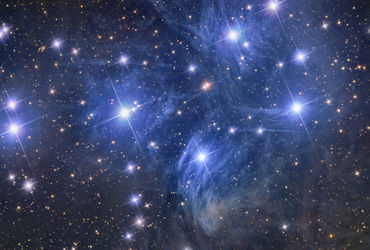Has your zodiac sign changed? Scientists say star positions have shifted over time
The familiar zodiac signs people follow may not match the stars in today’s skies. A new scientific claim suggests that the traditional zodiac system, created thousands of years ago, is based on ancient star positions that no longer align with today’s astronomy.According to a New York Times report, the zodiac signs used in astrology were fixed more than 2,000 years ago. But due to a phenomenon called axial precession — the slow wobble of Earth’s rotational axis — the relative position of constellations has shifted over centuries. This means the sun is no longer in the same constellations as it was when the zodiac system was first drawn up.For example, about 3,000 years ago the sun appeared in Aries during the spring equinox. By 2025, astronomers say it will appear in Pisces. In about 600 years, it will shift further to Aquarius. In simple terms, someone who has long believed they are Aries may actually fall under Pisces in astronomical terms.The findings have sparked debate. Astrologer Chani Nicholas argued that ancient practitioners already knew of axial precession and deliberately anchored the zodiac to the spring equinox point, when day and night are equal. This, she said, makes the system symbolically consistent, even if star positions drift.Astrology experts add that despite the science, traditional horoscopes still hold cultural and interpretive significance. The clash highlights the gap between astronomy, which is grounded in precise celestial calculations, and astrology, which continues to thrive as a cultural and spiritual practice.


The familiar zodiac signs people follow may not match the stars in today’s skies. A new scientific claim suggests that the traditional zodiac system, created thousands of years ago, is based on ancient star positions that no longer align with today’s astronomy.
According to a New York Times report, the zodiac signs used in astrology were fixed more than 2,000 years ago. But due to a phenomenon called axial precession — the slow wobble of Earth’s rotational axis — the relative position of constellations has shifted over centuries. This means the sun is no longer in the same constellations as it was when the zodiac system was first drawn up.
For example, about 3,000 years ago the sun appeared in Aries during the spring equinox. By 2025, astronomers say it will appear in Pisces. In about 600 years, it will shift further to Aquarius. In simple terms, someone who has long believed they are Aries may actually fall under Pisces in astronomical terms.
The findings have sparked debate. Astrologer Chani Nicholas argued that ancient practitioners already knew of axial precession and deliberately anchored the zodiac to the spring equinox point, when day and night are equal. This, she said, makes the system symbolically consistent, even if star positions drift.
Astrology experts add that despite the science, traditional horoscopes still hold cultural and interpretive significance. The clash highlights the gap between astronomy, which is grounded in precise celestial calculations, and astrology, which continues to thrive as a cultural and spiritual practice.
What's Your Reaction?







































































